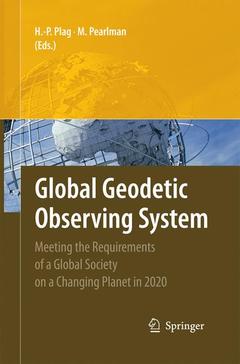Description
Global Geodetic Observing System, 2009
Meeting the Requirements of a Global Society on a Changing Planet in 2020
Coordinators: Plag Hans-Peter, Pearlman Michael
Language: English
Subject for Global Geodetic Observing System:
Keywords
Earth Observation; Earth Sciences; Global Change; Space Geodesy; geodesy
Publication date: 11-2014
332 p. · 15.5x23.5 cm · Paperback
Approximative price 158.24 €
Subject to availability at the publisher.
Add to cartPublication date: 08-2009
Support: Print on demand
Description
/li>Contents
/li>Comment
/li>
Comprehensive Overview of Geodesy's contribution to science and society
Broad coverage of current technological status and capabilities of modern geodesy
Identifies user needs and requirements in terms of geodetic observations and products
Includes supplementary material: sn.pub/extras




